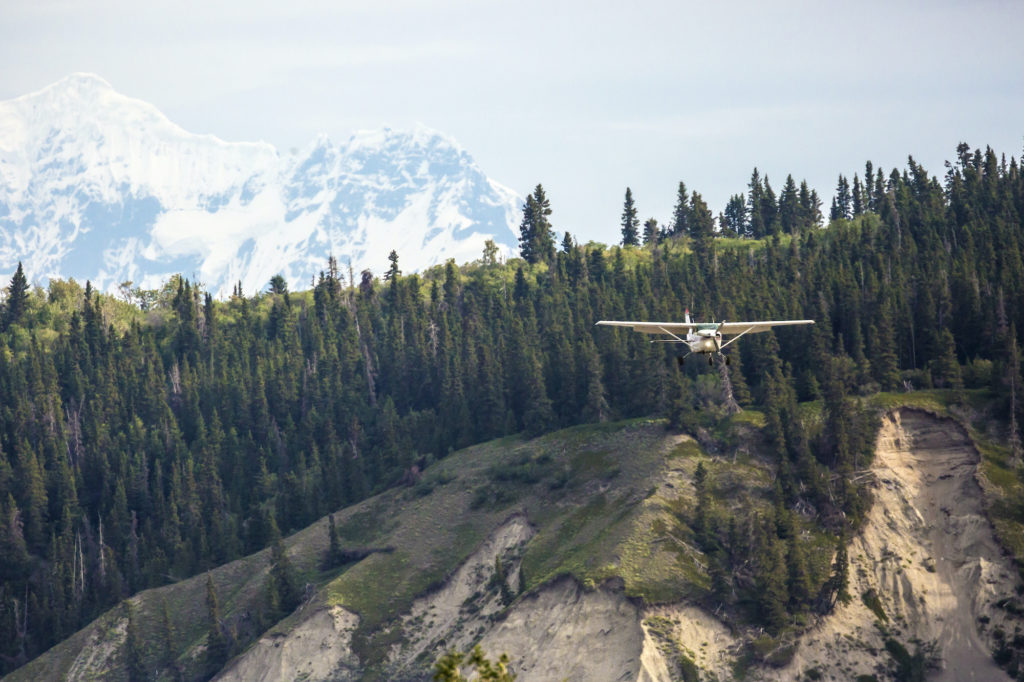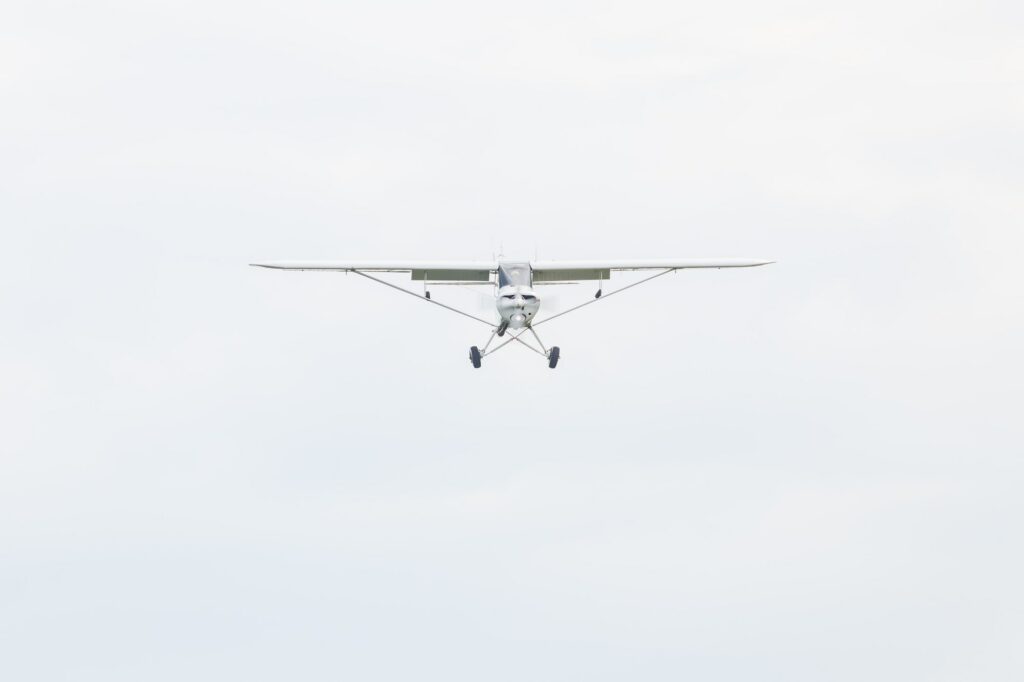
Small Airplanes are a Big Opportunity
Small Airplanes are a Big Opportunity
Flying small airplanes is a unique chance for pilots to develop fundamentals skills that benefit them the rest of their careers.
We hear a frequent statement from pilots, typically those in or recently emerged from the time building phase, that general aviation time building is wasted time. They argue that flying a light piston single is so drastically different from flying an airliner that it’s a pointless endeavor. We respectfully disagree, and we’d like to talk a bit about why.
First, to keep us focused: we’re solely discussing how flying small airplanes is a beneficial experience for future airline pilots. We’re not debating how many hours is sufficient. Nor will we claim that flying small airplanes alone entirely prepares pilots to step into a transport category jet, because it doesn’t. We merely think that pilots with quality experience in small airplanes are better prepared to succeed in the airline ranks.
An airliner is fundamentally an airplane, subject to the four forces of flight, and equipped with flight controls that function similarly to those in most light trainers. Light trainers provide a decent learning platform where inexperienced pilots may refine their understanding of aerodynamics. The handling characteristics differ, but a Boeing 737 stalls from the same principles that cause any piston signal trainer to stall, and fundamentals skills in light airplane are also fundamental skills in an airliner.
A transport category jet is obviously a bit more aerodynamically complex, with swept wings, various lift devices, high altitude considerations, and engine spool time. The consequences of mismanaging the airplane are considerably higher. It would be wise for the pilot of such a machine to be very well-versed in aerodynamic fundamentals. But such experience is difficult to develop in the short time required to earn a commercial certificate. The real learning happens on the job afterwards.
Flying light airplanes, and flight instructing in particular, allows pilots to hone their stick and rudder skills. Learning to teach a person to fly requires that you imbue them with an internalized understanding of how the atmosphere flows around them and then translate that into sight pictures, control inputs, and instrument readings. That’s a massive responsibility. Most instructors that give even a moderate effort at teaching well find that they leave instructing with a far better understanding of flight than they had going in.
That aerodynamic knowledge is also actionable in a transport category airplane. The intuitive understanding of sight pictures, the interplay between pitch and power, and proper rudder use in a crosswind are fundamental skills that can and should be developed in the general aviation world.
Why not just develop these skills in the airliner? There are a few reasons. The operational environment in an airline is highly regulated. Few airline pilots will ever experience, say, a stall in the actual airplane. Such training is accomplished in simulators which are hyperrealistic in some ways but unable to simulate G forces. Jets are expensive to operate, making them a poor training platform. And the consequences of a mistake are much higher in a large swept wing jet. An initially botched stall recovery in a small trainer is quite recoverable in a few thousand feet. A similarly botched recovery in a jet far less so.
For these reasons, most airline pilots’ stick and rudder skills begin a slow decline the day they walk away from general aviation flying. For many, that kind of flying is merely a stepping stone, and that’s okay. But isn’t it wise for a pilot to begin a multi-decade decline in manual flying ability with as much skill as possible?
Those skeptical of general aviation’s value in an airline career would likely highlight the stark difference in procedural complexity, and they’re not wrong. Airline operations are procedurally complex. Airline training programs are regularly described as a “firehose”, and rightfully so. That said, there is a difference between a pilot’s ability to execute a standardized procedure and their ability to adapt dynamically to changing conditions. Does a pilot recognize and recover from a stall by rote procedural execution, or by a combination of rote procedure and understanding of the aerodynamic factors involved?
This may sound pedantic, but it’s not. One provides a wider margin of error for substandard procedural execution, and one does not. If a pilot can only recover from a stall by rehearsing the same five or ten steps in sequence and forgets step four in the chaos—the chaos which is almost a guarantee given that the situation would not have arisen sans poor execution and low situational awareness—they’re very likely to place the airplane in an unsafe condition. If, on the other hand, the pilot has the intuitive ability to recognize they’re forgetting a step but understands their angle of attack, intuits their energy state and rate of energy state change, and is aware of the additional load factor they can impose, that pilot will very likely achieve a safe outcome.
This is not hypothetical. Some of the most-studied fatal airline crashes of the last two decades were directly attributed to pilots’ failures to respond appropriately to undesired aircraft states.
Developing this skillset is not built into the airline world. The airline world is too routine, and training too compressed. Fundamental flying skills are simply expected. And yet, it’s not uncommon for new airline pilots to lack fundamental flying skills. Many have hardly flow in actual instrument conditions. Some have built most of their time in one type with a dual-axis autopilot “flying” grids on an aerial survey.
Many aspiring pilots fail out of airline training because they don’t adequately build useful experience while in the general aviation world. Some slip through the cracks, as evidenced by Air France 447, Asiana 214, and Atlas 3591.
Aerodynamic understanding aside, general aviation flying is also a way for pilots to develop critical interpersonal skills. It’s an ironic fact of airline life that those who most often dismiss interpersonal skills as a Human Resources meddling in the hiring process are often not hired, even despite flying prowess. Interpersonal communication is the fundamental skill in airline flying, lacking it is wildly undesirable.
Flight instructing is, again, likely the best route for developing the skill, but there are others as well. Flying corporate or charter, or working as part of a team on aerial survey projects are also very crew-oriented.
Pilots must know how to navigate interpersonal conflict efficiently and effectively in a confined space with limited time and high stakes. That sounds kinda cool, but it doesn’t feel cool in the moment. It’s uncomfortable. Whether it’s a rash Captain attempting to continue an unstable approach or a coworker who just won’t wear deodorant, interpersonal conflict is an innate part of the career that doesn’t go away just because the airplane now has jet engines attached. The capacity for interpersonal conflict simply grows as the airplane gets larger: two pilots or more, flight attendants, ground crews, gate agents, loaders, dispatchers, and so on.
Airlines seek applicants with interpersonal skills for good reason. Although disgruntled pilots are quick to dismiss this as a preference for interpersonal capacity over stick and rudder skill, the reality is that there are many qualified applicants proficient in both.
We all know the quip that “good judgment comes from experience, and experience comes from bad judgment.” That’s not an invitation to make bad judgments, but merely the recognition that we all make mistakes, especially when we are inexperienced. Few of us are proud of all of our judgments as pilots, particularly those made from the lower-end of the experience spectrum. But they become learning opportunities. A general aviation time-building phase places pilots in roles of increasing responsibility, perhaps first as as new flight instructor or a right-seater in a Cessna Caravan, and then later as an Assistant Chief Flight Instructor or as PIC of the Caravan. This is a valuable confidence-building opportunity that encourages self-reflection, and the high-impact learning that occurs when you see the results of a mistake when nobody else was there to stop it. That’s real-world stuff!
Time-building gigs expose pilots to consistent risk management demands, go/no-go decisions, dealing with in-flight emergencies, inoperative equipment, legal processes, systems management, and more. Flying general aviation time-building gigs can be fun and rewarding, but easy they are not. The challenges of flying in a general aviation environment prepare pilots to make safe, tough decisions when the situation demands it.
Those experiences also tend to encourage humility and dispossess pilots of the idea that things like certificates or type ratings mean anything beyond the meeting of a minimum government-mandated standard. When pilots have the fortune to realize that technical qualifications are nearly meaningless and that true achievement is an internally-driven process, they begin to unlock their ability to do the job well.
Some pilots today view time building as beneath them. Commercial pilots with five hundred hours flying grids in good-weather believe that they should not have to wait to reach the regional airlines. They often find the fundamentals of general aviation boring and irrelevant to their future career. And there’s hardly a worse trait in a career aviator. At a time when they should be building fundamental skills, they’ve already started to stagnate.
Are there inexperienced pilots who could safely join the airlines well before reaching airline transport pilot certificate (ATP) minimums? Of course. But they’re uncommon, and rarely the ones making noise about it. They’re too busy learning.
There are a variety of factors that contribute to the enviable U.S. airline safety record. One is stringent maintenance requirements that ensure things very rarely go catastrophically wrong. Another is the implementation of crew resource management (CRM) training and policy that formalizes interpersonal communication to promote safety. But another factor is simply that U.S. airline pilots have flying backgrounds that are challenging and help develop well-rounded pilots.
Pilots who take time building seriously, who focus on learning and improvement and who simply care about getting better tend to succeed. Varied and challenging career experiences provide a foundation that helps them to have higher situational awareness, particularly when it comes to aerodynamics, interpersonal skills, decision making, self-reflection, and humility. These pilots often excel in their new airline role, not because a light airplane fully prepared them for flying jets, but because flying a light airplane well prepared them to learn to fly a jet well too.






